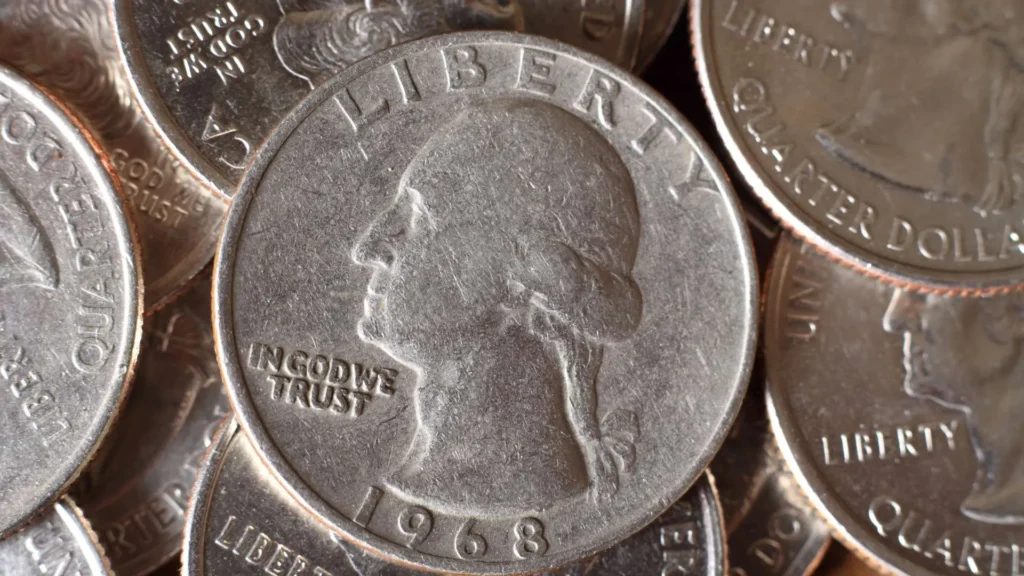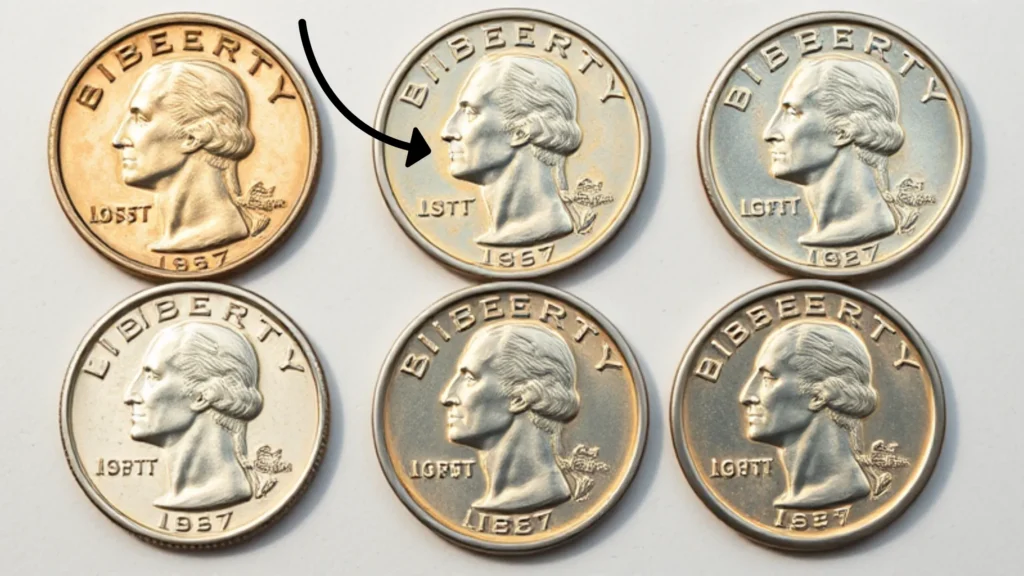Among numismatists, few items generate as much enthusiasm as state quarters. Produced from 1999 to 2008 under the U.S. Mint’s 50 State Quarters Program, these coins were intended to highlight each state’s history and heritage. Most are worth only face value, but a few have become scarce treasures, selling for thousands—or even millions—at auction.
Let’s examine five of the least common state quarters, their distinct characteristics, and why they are so valuable.Wisconsin
The most well-known error quarter is the 2004-D Wisconsin quarter, which has an additional leaf on the corn stalk on the back. This was an accidental design change due to a altered die, resulting in two different versions: the “Low Leaf” and “High Leaf” types.

Value
Depending on the condition, this uncommon quarter could sell for as little as $1,000 to more than $100,000. Its top recorded price at auction fetched an astonishing $1.5 million.
Delaware
The 1999-P Delaware quarter is already historic as the inaugural coin in the State Quarters Program. Still, a distinct error called the “Spitting Horse” renders some versions particularly valuable. The variety has a die crack alongside the horse’s mouth, causing it to resemble it’s spitting.
Value
Regular Delaware quarters are face value, but the “Spitting Horse” variety can be worth more than $10,000 in pristine condition.
Minnesota
Minnesota’s state quarter showcases its green landscapes, but a minting error, which was only made once, left an “extra tree” on a few coins. This design fluke makes the quarter a collector’s favorite.

Value
The value of an Extra Tree quarter ranges from $1,000 to $5,000, depending on its condition. Well-maintained specimens command the most money.
South Carolina
A minting flaw called “broadstriking” caused some 2000-P South Carolina quarters to be misstruck. They possess a wider diameter and an unfinished design since they weren’t struck in the coin collar correctly.
Value
Broadstruck South Carolina quarters can cost anywhere from $500 to $3,000, with higher-quality ones selling for premium prices.
Hawaii
Hawaii’s 2008-D state quarter features King Kamehameha I, but a rare variety emerged due to a die misalignment. This resulted in an “Inverted Design” where the artwork appears upside-down compared to normal quarters.
Value
Depending on the extent of the error and its condition, this rare quarter can be worth between $1,000 and $10,000.
Why Are These Quarters So Valuable?
A number of important factors contribute to the premium market price of these limited state quarters:
| Factor | Explanation |
|---|---|
| Rarity | Fewer error coins mean higher demand. |
| Condition | Well-preserved coins fetch top dollar. |
| Historical Significance | Coins tied to important events or figures are more desirable. |
| Collector Demand | The more collectors want a coin, the higher its price. |
Some were mistakes, and some were unintentional design variations, but all have attracted collector interest around the globe.
The life of coin collecting is a surprise, and state quarters are evidence that even pocket change can be worth a lot of money. As an old-time numismatist or an occasional collector, watching what’s in your pocket may bring about a one-of-a-kind discovery!
FAQ’s
Q. How do I know if my quarter is valuable?
A. Check for mistakes, mint marks, and scarce varieties with a coin reference.
Q. What is the rarest state quarter?
A. The 2004-D Wisconsin Extra Leaf quarter is one of the rarest.
Q. Where do I dispose of rare quarters?
A. You can sell them to coin shops, auctions, or through online platforms.
Q. How much is a Spitting Horse quarter worth?
A. It is worth over $10,000 based on condition.
Q. Are state quarters circulating?
A. Yes, but rare versions are less present in everyday change.
